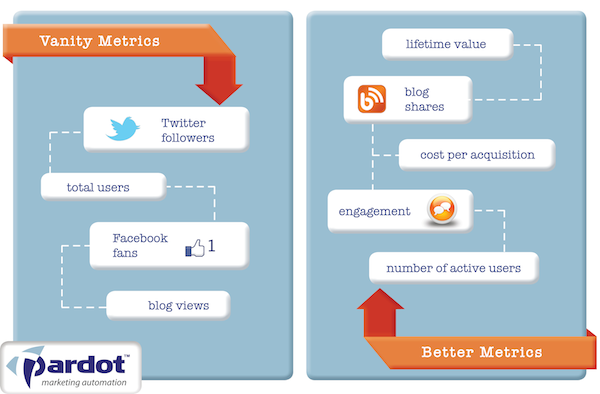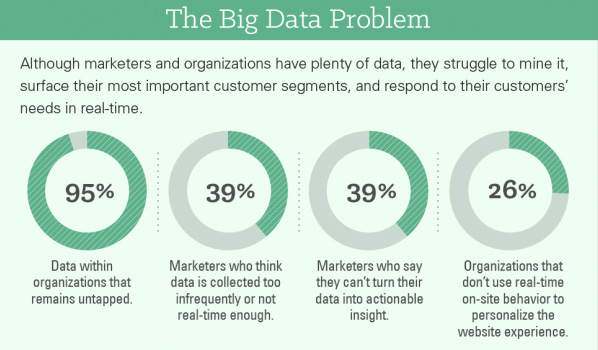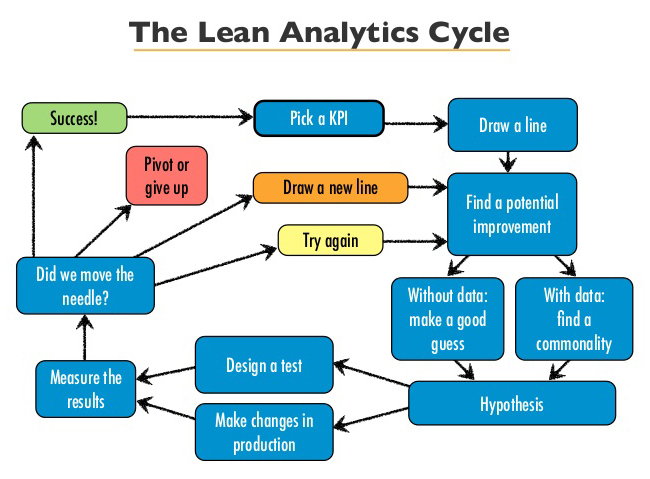Today, data is floating all around us. From unique visitors to social media followers, senior management may be confused and overwhelmed about how marketing analytics relates to ROI. Setting clear, short and long-term objectives is just the beginning of improving profits and resource allocation.
Brian Massey, a Conversion Scientist at Conversion Sciences, suggests that we “stop thinking of analytics as a discipline of data scientists,” instead we can make good decisions from unexpected sources. So, that’s my challenge to you.
Rev up your ROI by recognizing distractions and executing differently. Here are five tips to help your business thrive:
1. Plan for ROI
Value exists in quantifying the expected outcomes from marketing investments. Learn what to measure, when to measure and how to measure. In order to achieve your goals, establish specific steps to move the process along.
According to the State of Marketing Measurement report, 82% of marketers say their executives desire every campaign measured, but less than a third can effectively evaluate the ROI of each channel. Moreover, only 48% of marketers are using web analytics tools to measure marketing campaign effectiveness.
Find clarity in your plan by creating an initial outline. Look at historical data; pinpoint any trends. Then, flesh out your outline into a detailed plan. Figure out how you can install analytics into your existing process, like sending marketing emails and launching new products.
Realize the importance of measuring ROI to receive the full benefits of your marketing dollars. ASK: How are you going to reach the anticipated ROI?
Be an investigator! Plan and search for ways to measure effectiveness in your organization by:
- Aligning marketing analytics with financial goals.
- Using predictive modeling in your marketing data analysis.
- Obtaining customer engagement data from social feeds.
2. Avoid Vanity Metrics
Keep away from metrics that distract your team from the business goal. Typical marketing metrics like Facebook fans and press release shares may impress folks, but often don’t correlate to revenue.
Instead, turn your focus to engagement metrics that equate to ROI. ASK: How does this specific measurement help the company’s growth?
Jason Amunwa, Director of Products at Filament, states:
“Vanity metrics do nothing for your actual website objectives, but make your marketing efforts look good. This is problematic, because oftentimes they siphon effort and focus away from the things that could really move the needle for you. Engagement metrics tell you what content is truly performing for you, what’s just “meh”, and what’s ripe for enrichment and optimization; in short, engagement metrics tell you where the real opportunities are for growth.”
When you collect the right data, you save time and make better predictions. Leverage your tools by:
- Creating customized reports with the data your company needs.
- Tracking your customers’ behavior consistently.
- Analyzing the data before, during and after a marketing initiative.
3. Sales, Sales & More Sales
The Information Age has produced a new type of consumer—an informed buyer. People now make purchases based on blogs, reviews, and social networks. The good news for your business is that you have access to the same information. The bad news: your team doesn’t know how to translate that data into revenue.
Your team can get a holistic view of the true ROI when everyone focuses on how marketing impacts sales. ASK: How are your marketing investments affecting sales productivity?
Shed light on what marketing programs are profitable. Use data to increase sales by:
- Anchoring analytics on a strategy, not the previous year’s budget.
- Understanding the consumer’s decision journey to purchase your product or service.
- Discussing ROI with the entire organization, not just the marketing and sales teams.
4. Experiment Frequently
Experimentation offers opportunities for your business to accelerate its growth. Testing should not only offer insight but also alternatives. Furthermore, it doesn’t have to be a cumbersome process; simple business experiments work well.
Try the test-and-learn approach. Take one action with one targeted group, take a different action (or no action) with a control group, and then compare the results. This method keeps the process simple, and outcomes become apparent without the hassle.
Telestream, a provider of software and hardware products, increased its revenue by 300% with the help of Blast Analytics & Marketing. The marketing firm conducted conversion rate optimization testing, which uncovered key findings that led to a redesigned product feature matrix. The new site design gave potential customers a better understanding of Telestream’s product offerings and persuaded them to select the higher-priced offering.
Try new tactics. Recreate the marketing mix. ASK: How is your team exploring new possibilities?
Improve the returns on your marketing by:
- Setting aside some of your budget exclusively for experimentation.
- Picking one focus area; test until you can’t improve anymore.
- Moving quickly from failed experiments; no benefit comes from sulking in defeat.
5. Make A Decision Without Regret
Reporting your marketing analytics is necessary for your business’s success. More importantly, your team should focus on making an informed decision from those reports. So, what’s stopping management from taking action? They may have a case of analysis paralysis.
Analysis paralysis is common in all types of businesses. ASK: How are you measuring your actions?
You can quench your organization’s thirst for more data by:
- Introducing definitive boundaries on when data collection should halt.
- Ensuring that all analytics reports include action items.
- Creating a subcommittee to follow-up on decisions made after an analytical report.
Don’t let the chips fall where they may. Assess how your business can profit from marketing analytics. Your ROI depends on how you create and implement your business strategy. From planning to decision-making, your team can lower costs, increase sales and spread brand awareness.
About the Author: Shayla Price lives at the intersection of digital marketing, the law, and social responsibility. She inspires a new breed of innovative attorneys at Hearsay Marketing. Connect with her on Twitter: @shaylaprice




Comments (12)